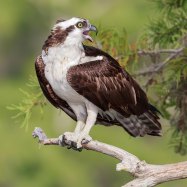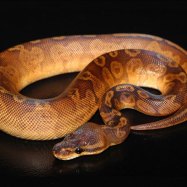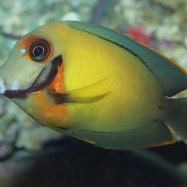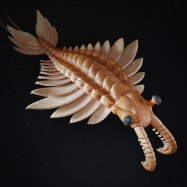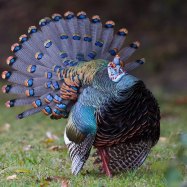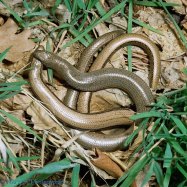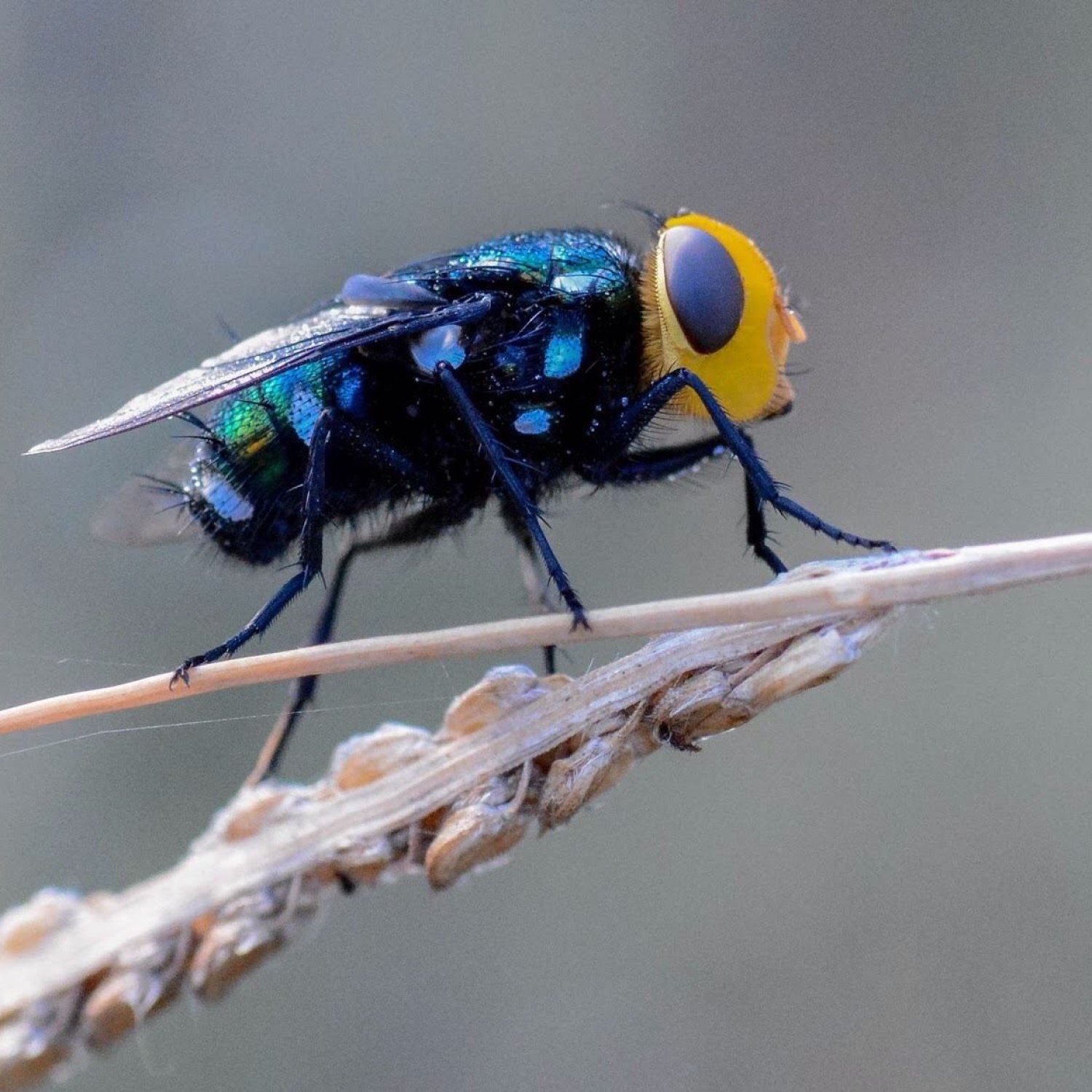
Blowfly
Blowflies range in size from 6 to 14 millimeters in length.
Did you know that Blowflies, part of the Calliphoridae family, can range from 6 to 14 millimeters in length? These compact and robust insects, found in diverse locations including urban areas, play an important role in the ecosystem by breaking down carcasses. Keep an eye out for these six-legged creatures with two wings! #Blowflies #Calliphoridae #insects #ecosystem
Animal Details Summary:
Common Name: Blowfly
Kingdom: Animalia
Habitat: Blowflies can be found in a wide variety of habitats, including forests, grasslands, wetlands, and urban areas.
The Fascinating World of Blowflies: A Scavenging Insect with Surprising Abilities
Have you ever come across a buzzing insect with a seemingly metallic body, flitting around rotting fruits or animal carcasses? Chances are, you have encountered a blowfly. These creatures may seem unassuming at first glance, but they are actually one of the most fascinating and important insects in the natural world.Blowflies belong to the scientific family Calliphoridae and are commonly referred to as just "blowflies." They are part of the Animalia kingdom, making them one of the millions of species of animals on Earth Blowfly. These insects belong to the phylum Arthropoda, which includes animals with segmented bodies, jointed legs, and an exoskeleton. The class of blowflies is Insecta, and they are a part of the order Diptera, which means "two wings."
Despite their small size, blowflies play a crucial role in their ecosystem and have a vast geographical distribution. They can be found in a wide variety of habitats, from forests to grasslands, wetlands, and urban areas. In this article, we will delve into the world of blowflies, exploring their habitat, feeding habits, distribution, and unique biological features that make them stand out from other insects.
The Habitat of Blowflies
Blowflies are incredibly adaptable when it comes to their habitat. They are found worldwide, with species adapted to different regions and climates. These insects thrive in diverse locations, including urban areas as well as natural habitats such as forests and grasslands.One of the reasons blowflies are so successful in different habitats is their ability to colonize new areas quickly Black Aphids. Their small size and ability to fly enable them to travel long distances, making it easier for them to find new sources of food and colonize new habitats.
Feeding Methods of Blowflies
Blowflies are classified as scavengers, which means they feed on decaying organic matter. They play an essential role in the ecosystem by helping to break down dead animals and plants, which reduces the spread of harmful bacteria and parasites. Blowflies feed on a wide range of organic matter, including animal carcasses, rotting fruits, and vegetables.These scavengers have an incredibly sophisticated sense of smell, which helps them detect potential food sources from long distances. Blowflies' mouths contain specialized mouthparts designed to help them ingest liquid food, which is their main source of nutrition. They can also vomit digestive enzymes onto solid food, breaking it down into a liquid that they can then ingest.
Geographical Distribution and Country of Origin
Blowflies are found in every country on Earth, making them one of the most widespread insect species. They have been observed in diverse habitats, from tropical rainforests to arctic tundras. However, they are more commonly found in areas with a warmer climate, as cold temperatures can be detrimental to their survival.Blowflies have also been observed to have different adaptations to suit their environment. For example, blowflies found in more arid regions have evolved to have longer lifespans and a slower developmental rate to survive in harsh conditions.
The Unique Body Features of Blowflies
Blowflies have several distinctive features that make them stand out from other insects. One of the most striking features is their coloration. They typically have a metallic or shiny body, with colors ranging from blue, green to black. These vibrant colors not only make them visually appealing but also serve as a form of protection.Blowflies have a compact and robust body shape, with six legs and two wings. As mentioned earlier, their small size makes it easier for them to travel and colonize new areas. The two wings of blowflies are covered with tiny hairs that act as sensory receptors, helping them to navigate and detect potential food sources.
These insects also have two compound eyes, which give them a 360-degree view of their surroundings. Each eye contains thousands of cells that can detect various colors, shapes, and movements. This incredible vision and ability to detect movement is essential for blowflies to evade predators and find food.
Size and Adaptability
Blowflies range in size from 6 to 14 millimeters in length, with males being smaller than females. Despite their small size, these insects have an impressive adaptability to their environment. They can withstand different temperatures, from freezing to scorching, and can also survive in low oxygen levels.Blowflies have also developed a resistance to diseases, making them a species that is hard to eradicate. This adaptability and resilience make them a key player in the ecosystem, ensuring the efficient breakdown of organic matter.
The Role of Blowflies in Forensic Science
Apart from their crucial role in the ecosystem, blowflies have also become instrumental in the field of forensic science. Due to their ability to locate and lay eggs on decaying carcasses, blowflies can be used to determine the time of death of a human or animal body. This information is vital during criminal investigations, as it can help investigators establish the timeline of events and identify potential suspects.Blowflies also play a role in determining whether a body was moved or tampered with after death. As these insects are attracted to the decomposition process, the presence or absence of blowfly eggs on a body can indicate how long it has been in a specific location. They can also provide information on the season in which a death occurred, as the type and stage of blowfly larvae present can help determine the time of year.
In Conclusion
In conclusion, blowflies may not be the most well-known or glamorous insect, but they play a significant role in the natural world. Their adaptability, unique body features, and crucial role in the ecosystem make them an important species. They provide vital services such as the breakdown of dead organic matter and have even made their mark in the field of forensic science. So the next time you come across a buzzing blowfly, take a moment to appreciate and marvel at this versatile and fascinating insect.

Blowfly
Animal Details Blowfly - Scientific Name: Calliphoridae
- Category: Animals B
- Scientific Name: Calliphoridae
- Common Name: Blowfly
- Kingdom: Animalia
- Phylum: Arthropoda
- Class: Insecta
- Order: Diptera
- Family: Calliphoridae
- Habitat: Blowflies can be found in a wide variety of habitats, including forests, grasslands, wetlands, and urban areas.
- Feeding Method: Blowflies are scavengers and feed on decaying organic matter, including animal carcasses, rotting fruits, and vegetables.
- Geographical Distribution: Blowflies are found worldwide, with species adapted to different regions and climates.
- Country of Origin: Blowflies are found in every country on Earth.
- Location: Blowflies can be found in diverse locations, including urban areas as well as natural habitats.
- Animal Coloration: Blowflies typically have metallic or shiny bodies in colors such as blue, green, and black.
- Body Shape: Blowflies have a compact and robust body shape, with six legs and two wings.
- Length: Blowflies range in size from 6 to 14 millimeters in length.
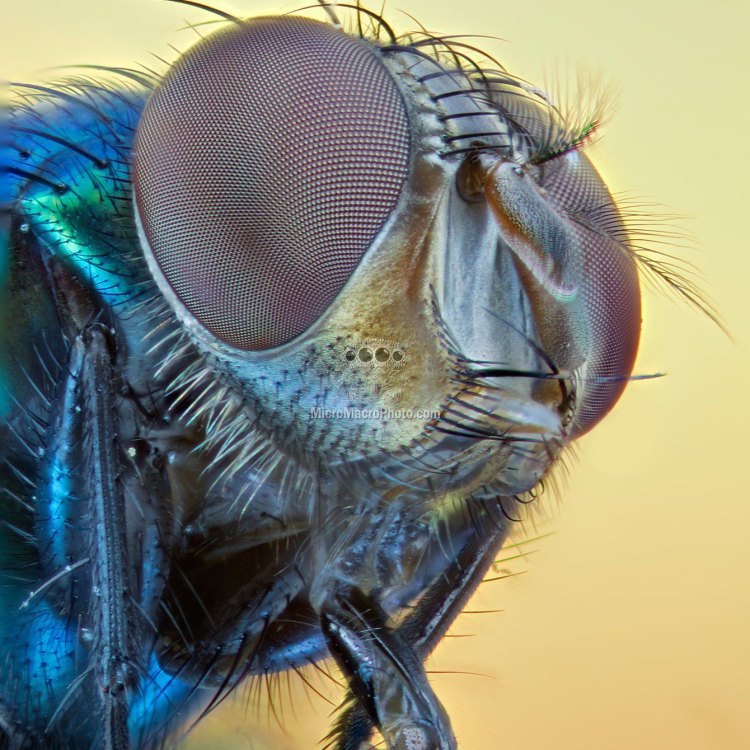
Blowfly
- Adult Size: The average size of an adult blowfly is around 8 to 12 millimeters.
- Average Lifespan: The average lifespan of a blowfly is around 2 to 4 weeks.
- Reproduction: Blowflies have a rapid reproductive cycle. Females lay eggs on suitable organic matter, and the larvae, known as maggots, hatch and develop through several stages before pupating.
- Reproductive Behavior: Male blowflies perform courtship behaviors to attract females, which may include wing vibrations and pheromone release.
- Sound or Call: Blowflies do not produce sounds or calls.
- Migration Pattern: Blowflies do not migrate long distances. However, they may move to different locations in search of suitable breeding sites and food sources.
- Social Groups: Blowflies are not social insects and do not form social groups.
- Behavior: Blowflies are highly attracted to strong odors and can detect them from a distance. They are also known for their ability to locate dead animals and initiate the decomposition process.
- Threats: Blowflies are not considered to be threatened. However, their populations can be affected by habitat destruction and the excessive use of pesticides.
- Conservation Status: Blowflies do not have a specific conservation status.
- Impact on Ecosystem: Blowflies play an important role in the ecosystem by aiding in the decomposition and recycling of organic matter.
- Human Use: Blowflies have been used in forensic investigations to estimate postmortem intervals and determine the presence of toxins.
- Distinctive Features: Blowflies have a metallic body coloration and are known for their rapid development and breeding cycle.
- Interesting Facts: Blowflies are commonly found near decaying matter, such as animal carcasses and garbage. They are attracted to the strong odors produced by decomposition.
- Predator: Blowflies are preyed upon by spiders, birds, bats, and other insectivorous animals.
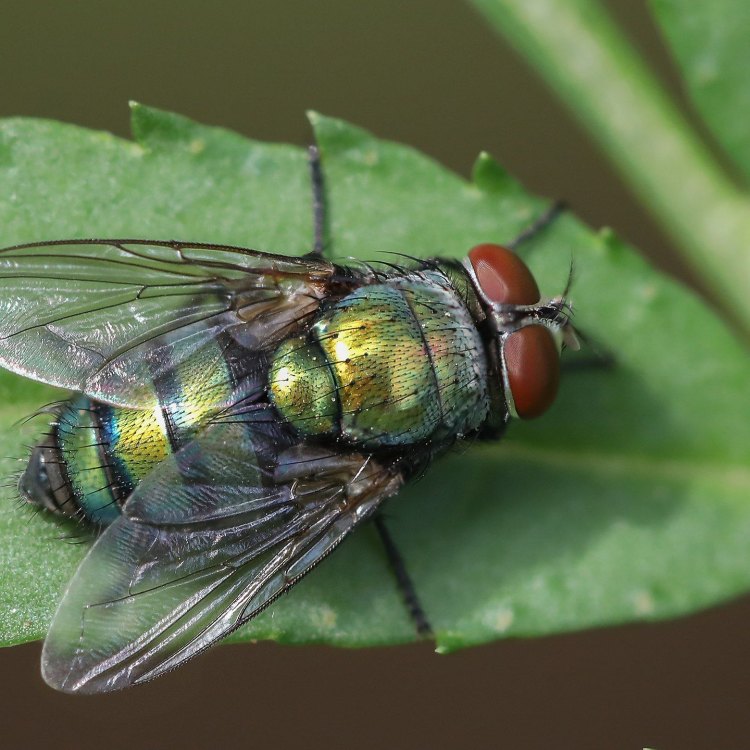
Calliphoridae
The Fascinating World of Blowflies: Uncovering the Secrets of an Underappreciated Insect
When you think of insects, images of buzzing bees, colorful butterflies, and pesky mosquitoes might come to mind. But there is a lesser-known insect that plays a crucial role in our ecosystem – the blowfly.These small, metallic-colored flies are often overlooked, but they have some fascinating features and behaviors that make them a truly unique and important species. In this article, we will dive into the world of blowflies, uncovering their secrets and highlighting their significance in the natural world PeaceOfAnimals.Com.
Adult Size
The average size of an adult blowfly is around 8 to 12 millimeters, making them relatively small flies. They are part of the larger group of flies known as blowflies, also called calliphorids, which includes over 1,000 species worldwide.
Lifespan and Reproduction
One of the most remarkable features of blowflies is their rapid reproductive cycle. The average lifespan of a blowfly is around 2 to 4 weeks, during which time they can produce multiple generations. This quick turnover rate is essential for their role in the ecosystem, which we will explore in more detail later on.
Blowflies reproduce through a process called oviposition, where females lay eggs on suitable organic matter, such as animal carcasses, rotting fruits, or dead animals. The eggs hatch into larvae, known as maggots, which develop through several stages before pupating. The adult flies then emerge a few days later, and the cycle continues.
This speedy reproductive cycle is crucial for blowflies to fulfill their role in the ecosystem, as they need to be able to quickly locate and colonize new sources of food Blue Nose Pit Bull.
Reproductive Behavior
To attract females for mating, male blowflies perform courtship behaviors, which may include wing vibrations and pheromone release. These behaviors also help to ensure that mating occurs between members of the same species.
Unlike some other insects, blowflies do not produce sounds or calls for communication. Their communication methods are based primarily on visual and chemical cues.
Migration Pattern and Social Groups
Blowflies do not migrate long distances, but they may move to different locations in search of suitable breeding sites and food sources. They are not social insects and do not form social groups, instead living and breeding independently.
Behavior and Role in Ecosystem
Blowflies are attracted to strong odors and can detect them from a significant distance. This feature is vital for their survival, as it helps them locate suitable food sources to lay their eggs on. They are commonly found near decomposing matter, such as animal carcasses and garbage, as these strong odors are irresistible to them.
But why are blowflies so attracted to these strong odors? It all comes down to their essential role in the ecosystem. Blowflies play a crucial role in the decomposition and recycling of organic matter. Without them, dead animals and other organic matter would take much longer to break down, leading to a buildup of harmful bacteria and toxins.
When a blowfly lays eggs on a carcass, the maggots hatch and feed on the decaying flesh. As they do so, they speed up the decomposition process and release nutrients back into the soil. This, in turn, helps to promote plant growth and supports the entire food chain.
Threats to Blowflies
Blowflies are not considered to be threatened, but their populations can be affected by habitat destruction and the excessive use of pesticides. Pesticides can be particularly harmful to blowflies as they can kill them or reduce their numbers, which can have a knock-on effect on the ecosystem.
Conservation Status
Despite their importance in the ecosystem, blowflies do not have a specific conservation status. However, it is essential to recognize their significance and protect their habitats to ensure their populations remain stable.
Human Use
Blowflies have been used in forensic investigations for decades to estimate postmortem intervals, or the time since an individual's death. Since they are attracted to decaying matter, blowflies are often the first insects to arrive at a dead body, and their presence can provide valuable information for criminal investigations and missing person cases.
Additionally, blowflies have been used in the detection of toxins in food and the environment. Scientists and researchers can collect blowflies from a specific area and analyze them for toxins, giving insight into potential environmental hazards.
Distinctive Features and Behaviors
One of the most remarkable features of blowflies is their metallic body coloration, which can range from blue and green to shades of copper and gold. This feature makes them stand out from other flies and adds to their unique appearance.
Another notable feature is their rapid development and breeding cycle, which we have touched on earlier. This feature is crucial for their role in the ecosystem and sets them apart from other insects.
Interesting Facts
Blowflies have many interesting facts that make them a unique and fascinating insect. For example:
- Blowflies are commonly found near decaying matter, such as animal carcasses and garbage. However, they can also be found in other decaying environments, such as compost heaps and sewage.
- Blowflies are attracted to the strong odors produced by decomposition using their acute sense of smell. They have specialized olfactory receptors that allow them to detect these odors from a distance.
- Blowflies can also detect chemicals released by decaying carcasses. This ability allows them to locate food sources even when there are no strong odors present.
- There is a species of blowfly, known as the carrion crow blowfly (Protophormia terraenovae), that has a mutualistic relationship with the carrion crow. The blowfly lays its eggs on the feathers of the crow, and the maggots feed on any parasites or debris, providing a cleaning service for the bird.
- Blowflies are culprits in the spread of some diseases, such as myiasis, which is the infection of living tissue by maggots. However, this is usually only a concern in countries with poor hygiene and sanitation.
- Blowflies have been used in traditional medicine for centuries. Certain cultures believed that blowfly larvae had medicinal properties and would place them on open wounds to promote healing.
- These flies are also commonly used as live bait for fishing and in the production of pet food.
Predators and Interactions in the Ecosystem
Like all species, blowflies have predators in the wild. Spiders, birds, bats, and other insectivorous animals are known to feed on them. Their metallic coloration can also make them attractive to certain predators, such as birds, who may mistake them for valuable prey.
Blowflies also interact with other insects, such as beetles and other flies, in their environment. These interactions can range from competition for food sources to even a symbiotic relationship, where different species benefit from each other's activities.
In conclusion, blowflies may seem like a simple and often disliked insect, but they play a vital role in our ecosystem. From their rapid reproductive cycle to their acute sense of smell, and their crucial role in the decomposition process, these small flies have a significant impact on our environment.
It's important to recognize and appreciate the unique features and behaviors of all species, even the ones we may not typically consider. And the next time you come across a blowfly, take a moment to appreciate the fascinating world of these underappreciated insects.
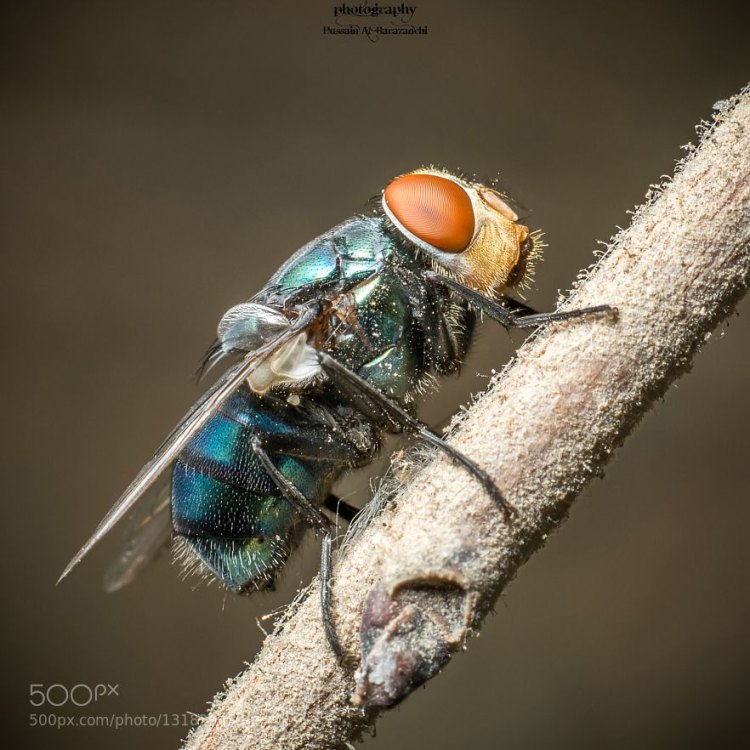
The Fascinating World of Blowflies: A Scavenging Insect with Surprising Abilities
Disclaimer: The content provided is for informational purposes only. We cannot guarantee the accuracy of the information on this page 100%. All information provided here may change without prior notice.


